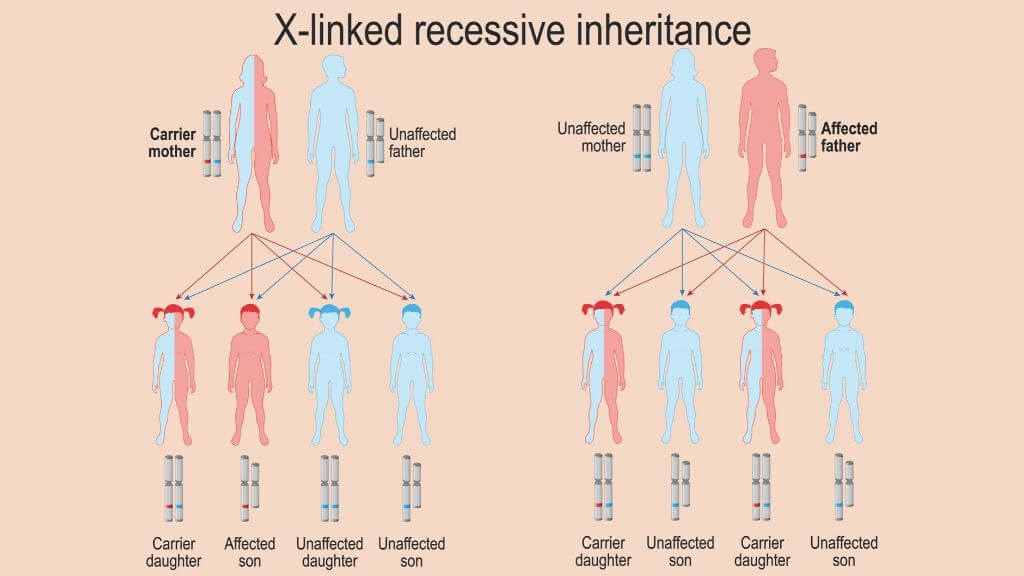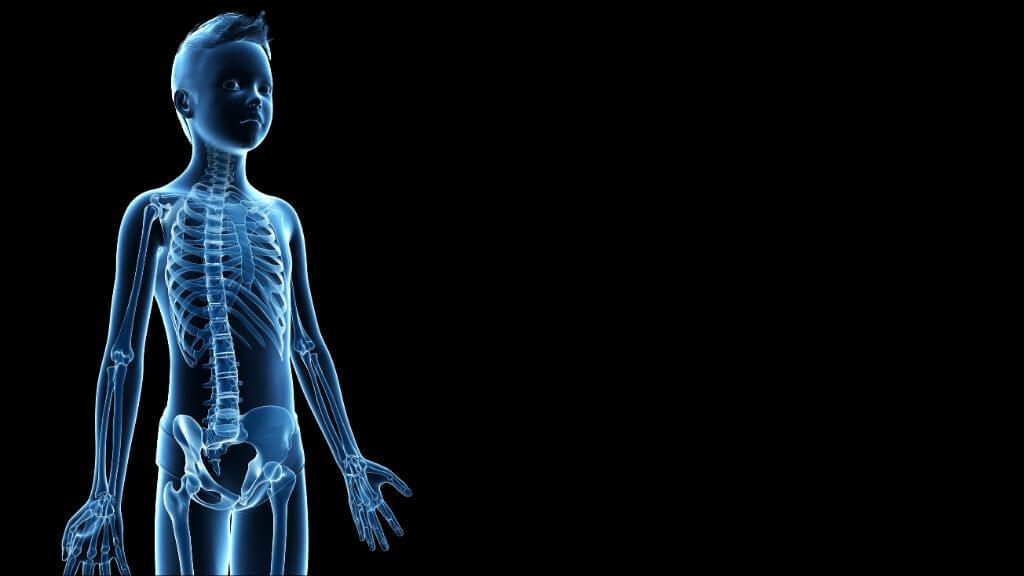Osteopetrosis is a group of very rare inherited skeletal disorders. The main characteristic of these disorders is increased bone density and abnormal bone growth.
The severity of osteopetrosis can range from mild to life-threatening. In rare cases, there can be neurological impairment or bone marrow failure, which is why prompt diagnosis and treatment are important to your outlook.
What Causes Osteopetrosis?
Genetic mutations in at least ten genes are known to cause osteoporosis. The genes are involved in the development of osteoclasts, which break down old bone cells while new ones are being produced.
Mutated genes lead to abnormal osteoclasts or reduced production of these cells, which means old bones cannot be broken down. New bones produced become too dense, making them more prone to breakage.
The condition is caused by the inheritance of an X-linked recessive gene. When a mother carries the X-linked recessive condition, and the father is unaffected, the outcome of the children depends on gender.
♦ Males have a 50 percent chance of being unaffected.
♦ Females have a 50 percent chance of being unaffected and a 50 percent chance of being an unaffected carrier.
♦ When the father has the condition, and the mother is not a carrier, all sons will be unaffected, and daughters will be unaffected carriers.

Osteopetrosis Symptoms
The symptoms of osteopetrosis will vary for each person and can include:
♦ Abnormal cortical bone morphology
♦ Abnormal pelvic bone ossification
♦ Abnormality of ribs structure
♦ Abnormal cranial nerve morphology
♦ Abnormal shape to vertebral bones
Osteopetrosis Diagnosis
Genetic testing is done to identify the type of osteopetrosis you may have. The diagnosis will determine which treatment you have and your outlook.
Treatment for Osteopetrosis
The treatment you follow will depend on your symptoms and the severity, so most treatment plans are very individualized. Osteoporosis in infants or children is different than for adults.
Infants require gamma interferon, which improves white cell functioning and decreases bone volume. Children most often require osteopetrosis surgery because fractures have already occurred, and adults may also need surgery to correct deformities in the bones.
Osteopetrosis Diet
A calcium-deficient diet has been associated with improving osteopetrosis symptoms. Excess calcium can contribute to increased bone tissue formation, which will increase bone density if resorption is not quick enough.

By increasing the dietary intake of vitamin D, you can also stimulate osteoclast activity, which increases bone resorption. Vitamin D can be increased through supplements or adding the foods below to your diet.
♦ Fatty fish: tuna, mackerel, and salmon
♦ Beef liver
♦ Cheese
♦ Egg yolks
Natural Treatments for Osteopetrosis
Watching your diet is one of the best things you can do to treat osteopetrosis and reduce symptom severity. In addition to this, you can also try physical therapy or occupational therapy.
Therapists will show you the exercises that can help strengthen your bones and the surrounding muscles to relieve aching and encourage healthy bone growth and recovery.
What Are the Variations of Osteopetrosis?
There are several types of osteopetrosis.
♦ ADO (osteopetrosis, autosomal dominant; adult type): This is the mildest form, and many affected people do not experience symptoms. Oftentimes, bone damage is discovered accidentally when x-rays are done for another reason.
♦ ARO (osteopetrosis, autosomal recessive; malignant infantile type): This is the more severe form of the disorder and is apparent during early infancy. Children can develop short stature, dental abnormalities, enlarged spleen and liver, and slow growth.
♦ IAO (osteopetrosis, intermediate autosomal): This is caused by either autosomal dominant or recessive inheritance and is not typically life-threatening.
♦ XLO (osteopetrosis, X-linked recessive): The rarest version of the disorder is caused by an abnormal gene on the X chromosome. This version mostly affects males.
Osteopetrosis Statistics
♦ Autosomal dominant osteopetrosis is the most common form, affecting 1 in 20,000 people.
♦ Autosomal recessive osteopetrosis affects 1 in 250,000 people.
Osteopetrosis and Surgery
Bone marrow transplants are only done in children with ARO. These procedures are risky and reserved for those in life-threatening conditions. The risks of the surgery need to be outweighed by the benefits of a successful surgery.
Osteopetrosis in Children
Severe forms of infantile osteopetrosis can be life-threatening, as many children do not survive past the age of ten. Bone marrow transplants have cured some infants in early-onset versions of the disease. However, the long-term outlook after transplantation is always variable.
When the disease appears in childhood or adolescence, the severity of the condition depends on how fragile the bones are.
What Is the Long-Term Outlook?
The outlook for osteopetrosis depends on which type you have and the severity. The condition is more serious in children, and life expectancy can vary.
For adults, the long term outlook is generally positive. Early diagnosis and treatment are important in increasing survival and longevity. Unfortunately, some cases in infants cannot be treated, and survival is minimal.







